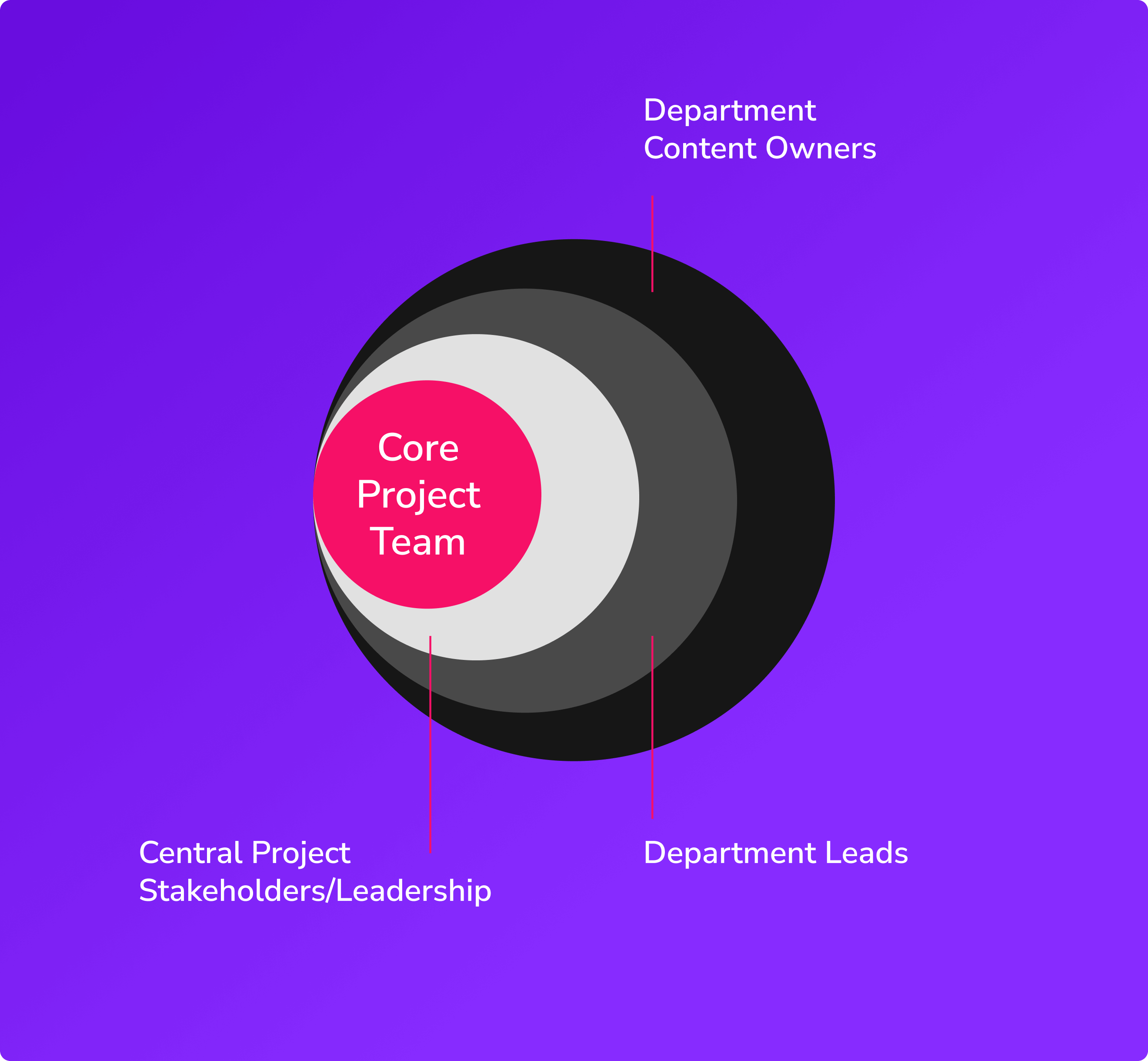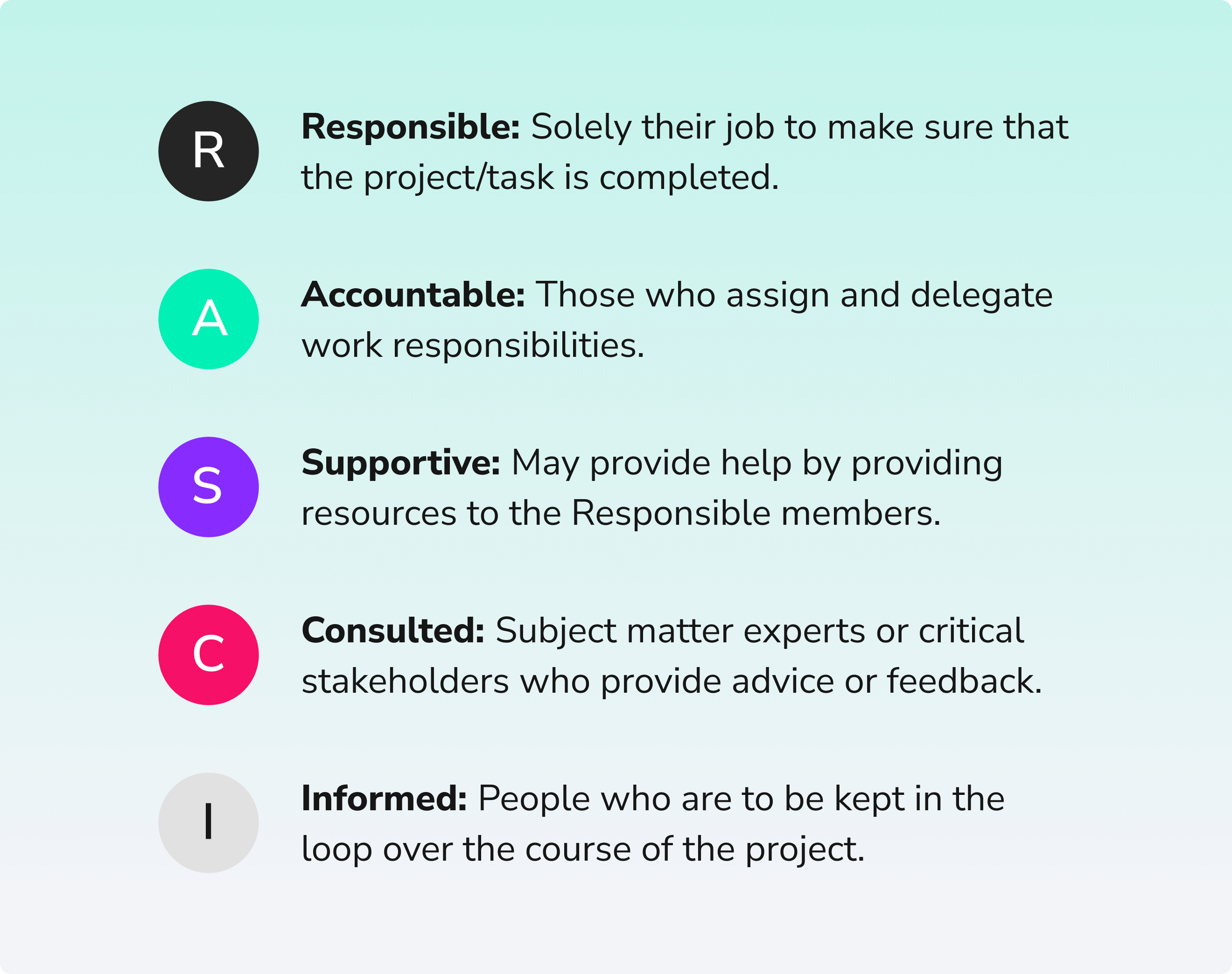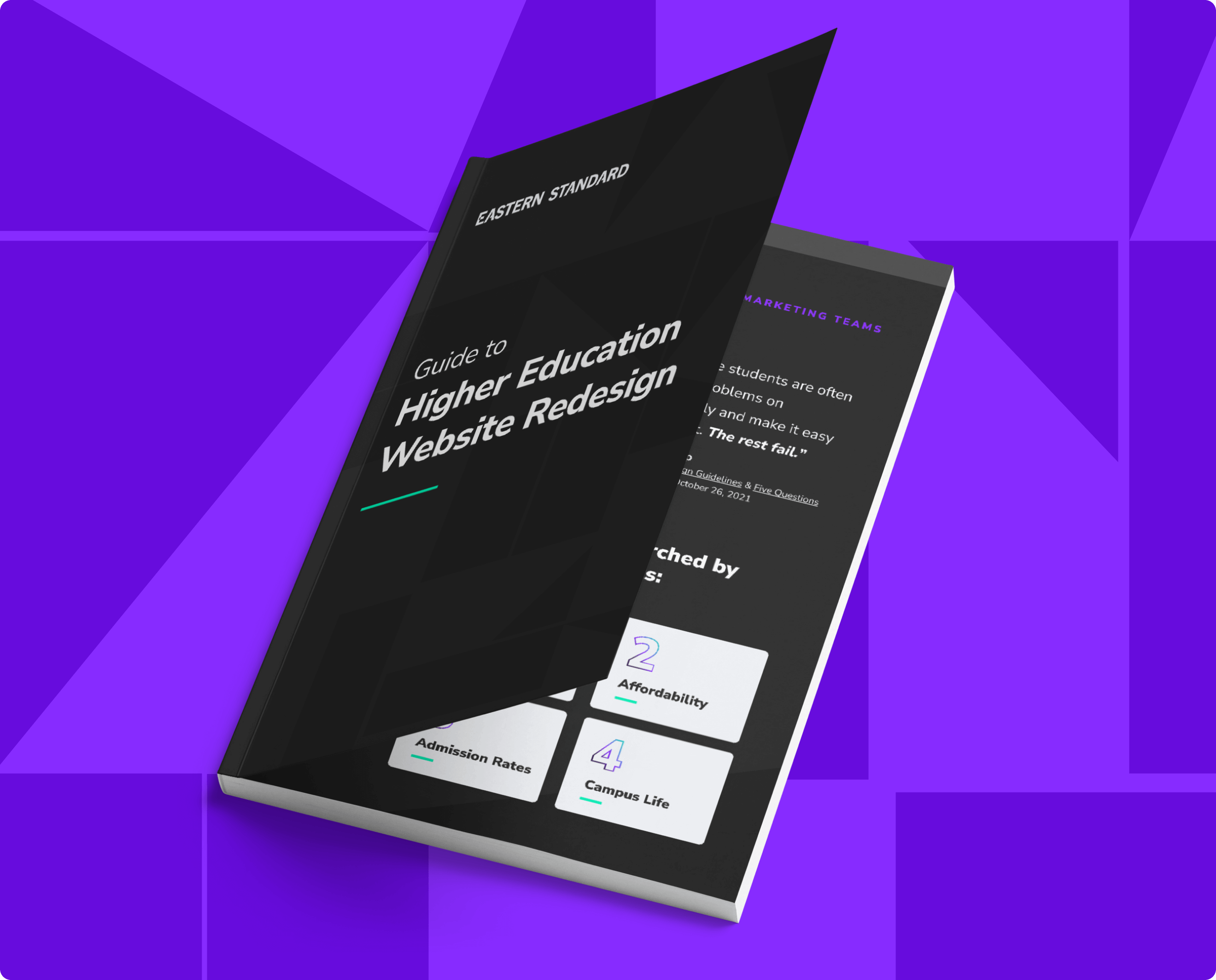Your .EDU Stakeholder Team Is a VIP Website Audience — Are You Treating Them That Way?
In any college or university website redesign, the team of internal stakeholders is not just a behind-the-scenes group with tangential opinions about how the project should go.
Quite the contrary.
They should be looped in as key project architects who shape the initial website strategy, maintain the site as it evolves, and ensure that it effectively serves the long-term needs of students, faculty, alumni, staff, community members, and your institution as a whole.
Because this VIP team will do the heavy lifting of aligning the redesign with your organizational goals, operational needs, and user expectations, you’ll want to assemble and involve them as early in the process as possible — and keep them involved long after your launch takes place.
Who Needs a Seat at the Table?
Here are some key higher education roles that should be represented and how they can contribute to your project:
Admissions Representatives → Provide insight into prospective students’ journey & how to facilitate the application process
Faculty & Academic Department Heads → Shape how course offerings, research initiatives, and faculty accomplishments and profiles should be presented
Student Services Providers → Provide oversight into student support resources, financial aid, and campus life details
IT & Web Team Members → Contribute deep familiarity with legacy site infrastructure; management and content update processes; security, accessibility, and integration needs, and more

Who Will Do What? Defining Team Responsibilities and Levels of Involvement
Not every stakeholder needs to be involved every step of the way. To ensure that discussions, reviews, and approvals happen efficiently enough to keep the project on track, you’ll want to identify how each stakeholder fits into the process — and who has the final say in key decisions. For example, your university’s Director of Strategic Communications may put their stamp of approval on design, colors, and brand representation even if they are not involved in other day-to-day project discussions.
A RASCI Matrix like the one shown here is helpful for categorizing and defining project roles for core team members, administrators, department heads, and others.
From there, input can be gathered from team members based on their responsibility ranking through a variety of tools — from well-crafted surveys for those with less involvement to workshops, breakout sessions, 1:1 interviews, and weekly standup meetings with those who are deeply involved, accountable, and ultimately responsible for project outcomes.

What Specific Contributions Will Internal Stakeholders Make to Your Website Redesign?
Setting the Strategic Goals & Vision
Working together, this team will define the website’s purpose and top priorities (e.g., recruitment, student support, alumni engagement), and ensure alignment with your institutional branding, messaging, and accessibility standards. They’ll pay close attention to maintaining consistency across pages, departments, and related digital marketing campaigns and outreach initiatives.
Providing Important UX Insights
Because they each come to the table with unique perspectives on the different audiences they interface within their roles — including prospective students, current students, faculty, alumni, etc. — these team members can offer insights into the UX challenges and needs they encounter on a daily basis.
Contributing Technical & Functional Input
IT and web teams can provide critical guidance on selecting the right content management system (CMS), security features, and integrations with existing systems (e.g., student portals, course catalogs, CRM software, and more). Thanks to deep involvement with your legacy site, they will also have valuable insights on necessary mobile responsiveness improvements, accessibility compliance upgrades, and practices that have historically had the most impact on your SEO.
Guiding Baseline Content & Making Future Additions
After identifying who will “own” the different sections of your site, those individuals can get to work auditing related content to decide which assets will get migrated, merged, or archived as the new site takes shape. Post-launch, they’ll need a plan for ensuring that content stays current and accurate via workflows that make the most sense for your teams. This is especially important for mission-critical content like academic program pages, research highlights, admissions events, application deadlines, and even general FAQs.
Consolidating User Testing & Feedback
Not only will you want this team to take an active role in shaping intuitive navigation and seamless user experiences, but you may also enlist them to gather feedback from usability testing conducted with students, faculty, and other key users during prototype reviews.
Facilitating Stakeholder Communication & Change Management
Acting as liaisons between your web redesign team and their respective departments, these individuals can help you meet and manage universal expectations, socialize the new site launch, and obtain buy-in from faculty, staff, and leadership.
Overseeing Post-Launch Maintenance & Continuous Improvement Efforts
By establishing long-term website governance policies for updates, analytics tracking, and user feedback collection, your team will ensure that content stays fresh, UX changes are made based on data-driven insights, and the site continues to meet your institutional goals well into the future.
How We Can Help
Need help with a higher education website redesign that starts with a strong foundation of stakeholder alignment? Let’s work together.
Note: This post was adapted from our Guide to Higher Education Website Redesign. Download this free resource today to ensure your new site doesn’t represent a lateral move — but instead propels your organization forward to reach its goals.




